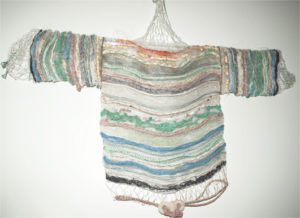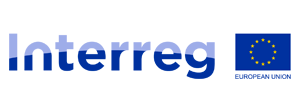Cleaning up our oceans – one video game at a time
We’ve all read stories about how plastic waste is choking our oceans. But how do you get people to do something about it? Two projects show how using new communication tools can help tackle the old problem of marine litter.
I accidentally shot a seal yesterday. And a seagull. And a diver.
Luckily, it was just a video game and no animals, birds or humans were hurt as I clumsily tried to blast away discarded fishing ropes and nets on the website of Circular Ocean.
The arcade-style game is just one of the fun, fresh tools this award-winning project used to inspire communities to create jobs and boost business while saving our seas.
Another was a competition to inspire fashion designers, inventors and entrepreneurs to turn old fishing gear into paddle boards, sunglasses, wallets and shoes. To help publicise the event, the organisers created an animated video with a Mission Impossible theme – and soundtrack. ‘Your mission, should you choose to accept it, is to help Circular Ocean combat the menace that is waste fishing nets and ropes,’ the subtitles read, urging participants to ‘unleash your inner eco-warrior.’
But we didn’t want to put people off. We wanted to engage people.
‘There are so many pictures out there of birds caught in nets,’ says Dr. Neil James from the Environmental Research Institute in Scotland, Circular Ocean’s lead partner. ‘But we didn’t want to put people off. We wanted to engage people.’
The aim of the project, which ran from 2015-2018 with funding from Interreg’s Northern Periphery and Arctic Programme, was to find new ways of curbing the relentless rise of plastic litter in our seas. Up to 12.7 million tons of marine plastic waste enters oceans each year, meaning that by 2050 there will be more plastic than fish in the world’s seas unless drastic action is taken.
Rather than focus on all marine litter, Circular Ocean highlighted the threat – but also the opportunity – posed by the 33,000 fishing nets lost in European waters each year. ‘Instead of seeing plastics as a waste resource, we wanted to make people see it as a business resource to create new value,’ says Dr. James.
To encourage this, the project didn’t just create cute games and videos. It provided free webinars for businesses interested in making money out of old rope. And it supported events like the #Net_Hack Challenge aimed at inspiring students to find cool new uses for junk fishing gear – like this jumper made from discarded fishing lines.

The project’s creative approach to communication won it many accolades, including Ireland’s Pakman Award for Environmental Education & Awareness in 2018 and the Public Choice Award at the European Commission’s RegioStars Awards in 2016. Its success also spawned a follow-up project – Blue Circular Economy – that aims to help small companies profit from waste fishing nets across Europe’s northern edge.
Circular Ocean benefitted from a spike in interest in tackling plastic waste, provoked by shocking images of dead birds with stomachs full of plastic and massive garbage patches in our oceans. Public clamour for action led the European Commission to propose an ambitious strategy aimed at banning single-use plastic products and making sure all plastic packaging is recyclable by 2030.
You have to keep a positive attitude, be bold and have fun.
Another project to surf the wave of concern over ocean waste is BLASTIC, which was financed by the Interreg Central Baltic Programme between 2016-2018. The aim of the project was to raise awareness of how plastic waste enters the Baltic Sea. If this sounds like a subject only of interest to marine biologists with PhDs, think again. The project’s logo and website feature eye-popping designs that wouldn’t look out of place on the record cover of a rock band. And the short explainer videos boast vivid pink and aquamarine graphics, thumping electronic music and in-your-face messaging.
‘You have to keep a positive attitude, be bold and have fun,’ says Atte Lindqvist of Keep the Archipelago Tidy Association, one of the project’s partners. ‘Otherwise the issue can seem morbid and hopeless.’
This sense of fun certainly comes through on BLASTIC’s blog, which namechecks bands as varied as Gorillaz and Bing Crosby in article headlines such as ‘Welcome to the world of the plastic beach’ and ‘I’m dreaming of a litter-free Christmas.’
Like Circular Ocean, BLASTIC has its own litter game based on the childhood game Labyrinth, where you have to steer a marble along a marked route while avoiding the holes. In the eco-Baltic version, you have to coax the litter to the bin, while avoiding littering. Its two most famous players to date are the prime ministers of Sweden and Finland who wobbled the marble away from trouble at a Baltic Sea conference in 2016.
‘It’s very hard to communicate complex issues. You have to dumb down a bit,’ says Lindqvist, adding: ‘We created a buzz in many countries.’
Both the Circular Ocean and BLASTIC projects highlight the importance of using creative communication tools to grab audiences’ attention in a world of information overload. Says Elisa Bertieri, Communication Officer at Interreg Central Baltic: ‘No matter how great your achievements, if you don’t communicate them to the world, they might as well not exist.’

